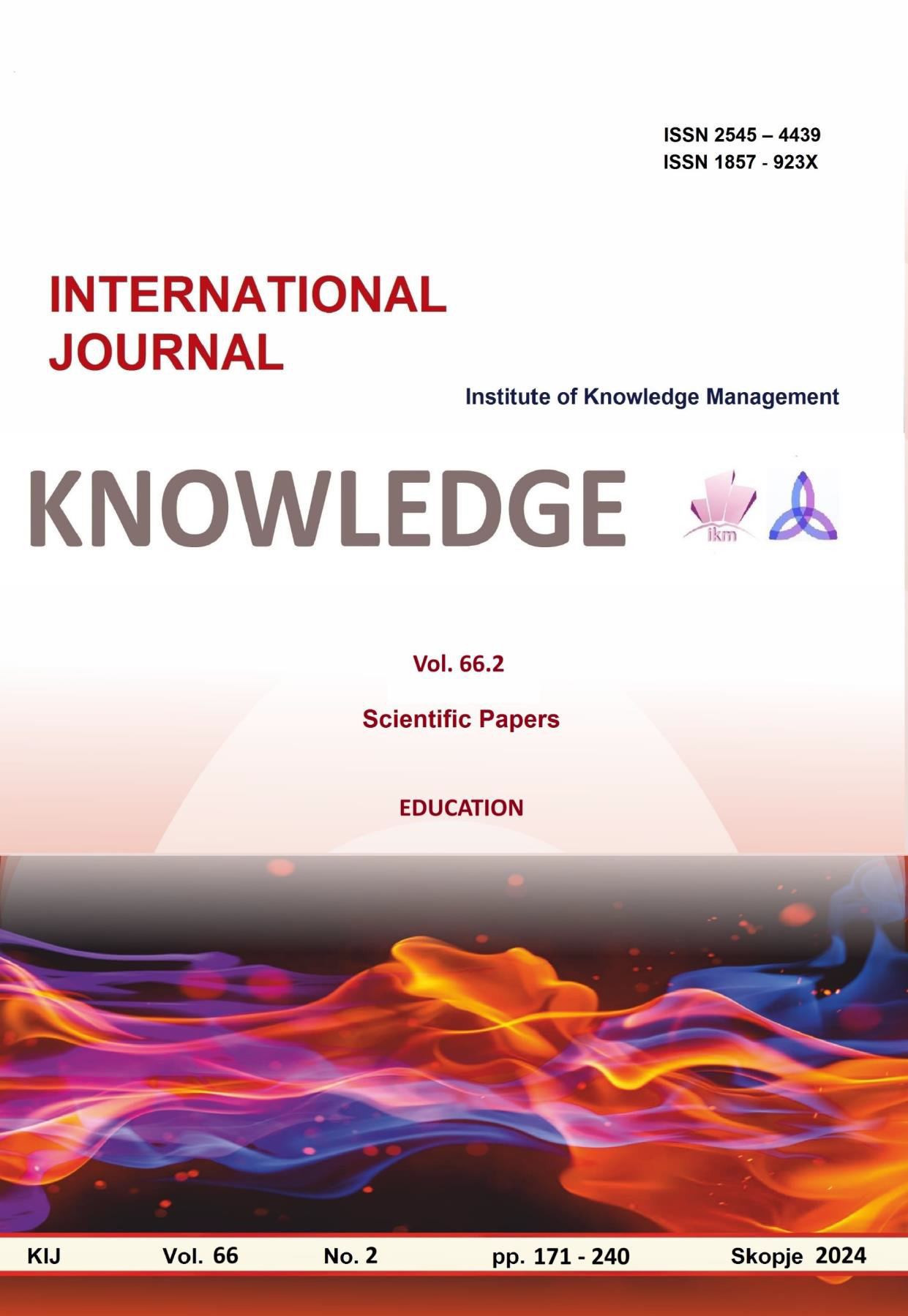THE ROLE OF MICROSOFT PLATFORMS MAKECODE AND TINKERCAD IN STEM EDUCATION
Keywords:
STEM education, STEM platforms, Project-based learning, Middle school, STEM technologyAbstract
Modern education is evolving as quickly and dynamically as digital educational resources. Invariably in recent years, there is more and more talk about the integration of STEM learning in schools. The challenges surrounding his teaching are varied. On the one hand, every teacher must be familiar with the basic principles and ideologies embedded in STEM education, and on the other hand, how to implement it in the available educational base. The interweaving of different science, technology, engineering and mathematics is the key point that a teacher should organize and implement in a lesson. This approach is relatively new for Bulgarian teachers, which also leads to its slower entry into practice.
In order for this training to be applicable, by the end of 2026 it is planned that STEM classrooms will be built in every Bulgarian school with the help of the Ministry of Education and Science and the financial support of the European Union. This will enable each teacher to use an environment in which to build each student's basic problem-solving skills from life and practice.
Thanks to the already established STEM centers, some schools have opened new majors through which graduating students acquire a modern STEM profession. Such specialties will continue to be revealed, because the creation of narrowly profiled specialists no longer meets the requirements of the modern labor market. Each STEM center is equipped with different educational resources, depending on the goals and capabilities of the school. Programmable devices such as Lego, Arduino, Micro:bit, makey makey and other educational resources are largely present in these specialized classrooms. In the process of their work, teachers see a problem that can hardly be solved. Most programmable devices require an environment in which the codes can be programmed and tested before use. For some devices there is an official working environment, but for others not. Another challenge for the teacher is how to set homework when students don't have the programmable devices they work with at school at home. Independent work with platforms where each student could create his own code, simulate, test and edit it, will enable him to upgrade his knowledge and competences. The experience of the COVID-19 pandemic shows that working in a shared educational environment is most suitable for working between students and teachers. Using learning platforms that can demystify all of these issues is a step forward in STEM education.
References
Ivanova-Nedelcheva, А. (2022). STEM education – a key tool of the competence approach, KNOWLEDGE – International Journal Vol.54.2, pp.277-281
Garov, K., & Peykova, D. (2019). Someaspects of STEM training in primary and lower secondary education. Scientific conference "Innovative Information and Communication Technologies for Digital Research Spacein Mathematics, Informatics and Educational Pedagogy", Pamporovo, 67-76.
Stefanova, S. (2024). Placing students at the center of the learning process through the use of STEM project-based education in the middle education stage – methodical guidelines for teachers, Natural Sciences and Advanced Technology Education, Vol. 3, Numbere 1-2, 17-29, https://doi.org/10.53656/nat2024-1-2.06
Kozhuharova, D., & Zhelyazkova, M. (2021). WHAT IS STEM EDUCATION, Е-списание „Педагогически форум“, брой 3, ISSN: 1314-7986, стр. 19-28
Mustan, S., & Harizanov, Kr. (2023). Some possibilities for applying the micro:bit in stem education grades 5-7. Annual of Konstantin Preslavsky University of Shumen vol. ХXIV С, pp. 77 – 84, https://doi.org/10.46687/RXLI4366
Pavlova, N., & Toncheva, M. (2022). Attitudes of Future Kindergarten Teachers towards the STEM Approach, Mathematics and Informatics, V. 8, 1053-1063, https://doi.org/10.53656/ped2022-8.08
Peytcheva-Forsyth, R., & Aleksieva, L. (2022). Опитът в електронното обучение на студенти и преподаватели като фактор за формиране на отношения и нагласи към неговите възможности и ограничения (уроци от пандемията COVID-19). Pedagogika-Pedagogy. 1169-1190. 10.53656/ped2022-9.07.
Uzuniva, V. (2022). Social and emotional learing as through the views of teachers applying stem approach in learining. Е-списание „Педагогически форум“, брой 2, ISSN: 1314-7986, стр. 16-28, DOI: 10.15547/PF.2022.009
Velikova E., Mierlus-Mazilu, I., Vasileva-Ivanova, R., & Georgieva, D. (2018). About The STEM Education Processing of the 57-th Annual Scientific Conference of Angel Kanchev University of Ruse and Union of Scientists – Ruse. Processing of the 57-th Annual Scientific Conference of Angel Kanchev University of Ruse and Union of Scientists, pp 10-14.
Харизанов, Кр., & Георгиева, С. (2018). Активните методи на обучение при деца билингви, Сборник научни трудове МАТТЕХ 2018, ISSN: 1314-3921, Шумен, 2018, стр. 251-256.
https://www.mon.bg/nfs/2020/05/21np_stem-sreda-20.pdf, 21. НП „Изграждане на училищна STEM среда“, Access 10.08.2024
https://microbit.org/get-started/features/overview/, Access 02.08.2024
https://www.tinkercad.com/, Access, 02.08.2024





